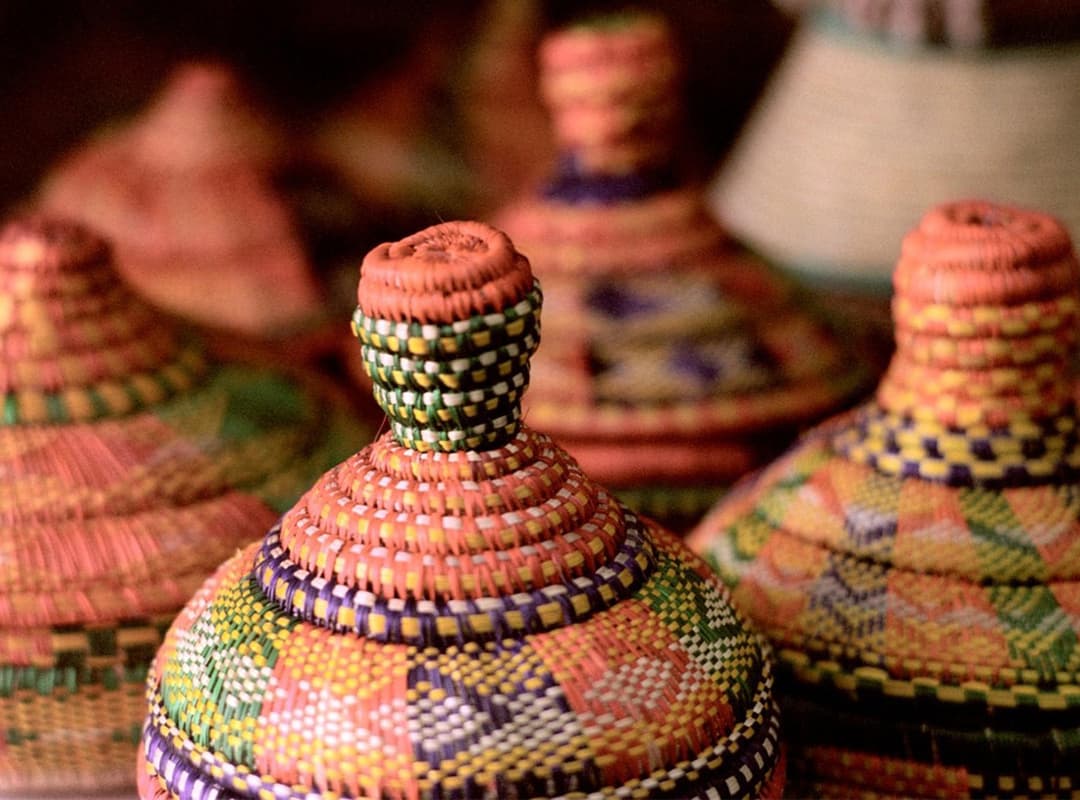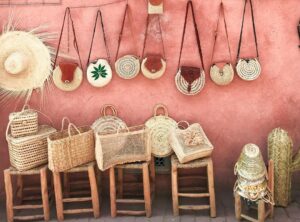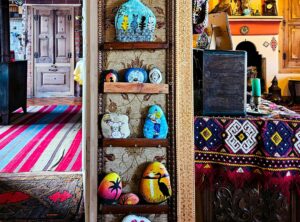The conquest of the feudal states and proto-states of Africa and their culture by Europeans could not interrupt the spontaneous development of folk art, including applied art. The tribes and peoples of Africa continued to create in various genres of sculpture, painting, and ornamentation. The greatest wealth of forms and perfection was achieved in the field of sculpture. Although it had a cult character, it was not limited to religion itself. Decorative and applied arts were closely connected with work and life. Decorated benches, stools, bowls (including carved cups from the Congo), combs, knives, spears, and processed animal skins embodied the aesthetic ideals of the people.
In the rainforests, where dwellings were made of wood, the walls and ceiling were covered with mats with complex geometric woven ornaments. In the steppes, clay buildings prevail, and they are decorated with various painted projections, jambs, cornices, and sometimes with various pillars, vultures, etc.
If we turn to the sculpture itself, it is divided into three main genre groups. The first group includes images of spirits, ancestors, or certain historical figures, and for tribes with developed mythology, gods. The second group includes masks used in the rites of initiation of young men and women into the tribe. This group also includes shaman masks, dance masks, and masks of secret unions. The third group consists of sculptural carvings.
The art of wood carving, mats ornamentation, and beaded embroidery is widespread among all the peoples of Tropical Africa, both West, East, and South.
Music. One of the features of African musical styles is their question-and-answer nature, which is complemented by forced polyrhythmics. (The simultaneous sound of different rhythms that merge into a single complex whole). And every musician, dancer, or listener has their own place. The song genre in African music is a situation where the soloist and the choir repeat sentences. The chorus often consists of the audience. Thus, the performance of music in African culture and its perception is a form of communication. The goal is to attract as many people as possible to a musical event.
Unlike in Europe, music in Africa is an integral part of social life. Now even protests resemble carnivals.
Music promotes interaction between people and gives them a place in the community.
A characteristic feature of music is drums. Each tribe has its own drums, and each has its own “language”. There are almost as many “languages” of talking drums as there are language dialects (and there are more than 2000 of them in Africa). Each drum has its own rhythm, creating its own musical style.
The main feature of African culture and thinking in general is a focus on the past. But this past is not frozen, but is constantly present in the present. (Perhaps that is why it is so difficult for Africans to build a modern democratic society without past customs and traditions)
The artist focuses on the human figure. The head is the main element, and the body only indicates gender and tattoos.
The main thing in art is an action, an action (dance, ritual), so art objects are “moving” (a mask, during a ceremony).
African art exists for everyday life, protecting from the evil eye or other forces, evil or good (amulets, fetishes).
In Africa, works of art are an integral part of beliefs and belong to the entire community. For example, African bambara masks are masks with calm faces and closed eyes. They depicted deceased relatives and were used in funeral rites or on holidays. Frightening masks, where human features are combined with those of an animal. They were worn by members of secret societies African statuettes, most of them depicting the dead, or an animal totem, such as the antelope statuette of the Bamana people in Mali.
And finally, the general characteristics of African art are: strong, dramatic expressionism, lack of naturalism and sharp, angular forms. The African artist sculpts free and independent masses and obtains the symbol of a human being. All this is nothing more than stylization, which Europeans realized only in the art of the twentieth century.


